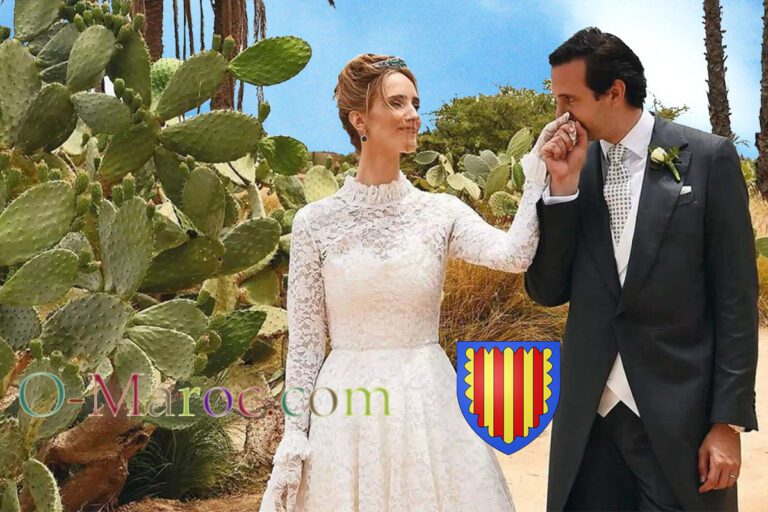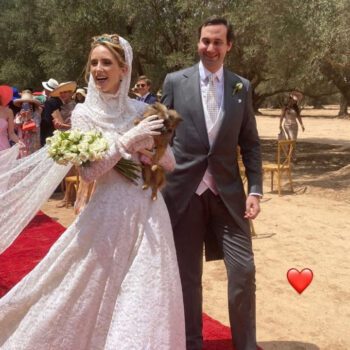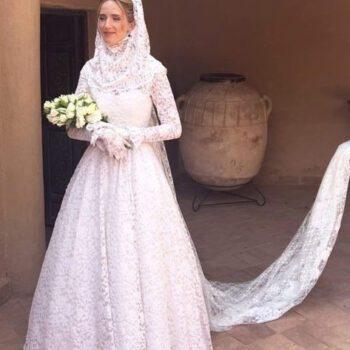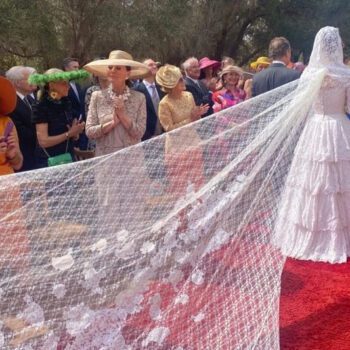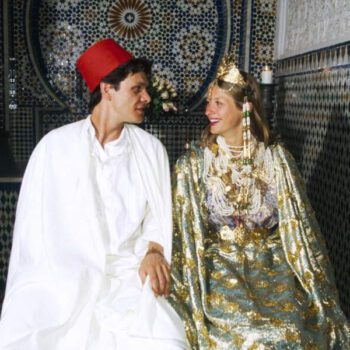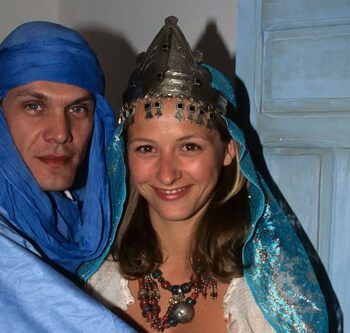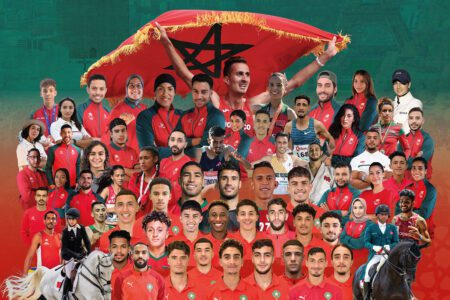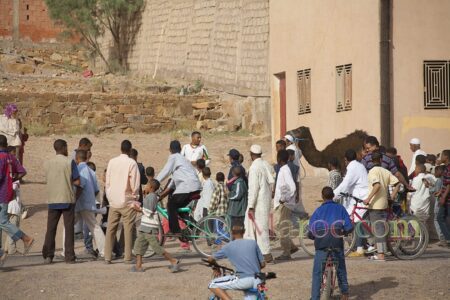For once, it was not in Marrakesh but in Taroudant that a ‘jet set’ wedding took place over the weekend of 27 May.
Princely wedding in Taroudant
The entire Belgian (and therefore European) Gotha gathered in Таrоuԁаnt, at a private estate with a carefully concealed real name, to celebrate the mass and wedding reception of Aurele de Mérode and Estelle Hanet. He is a director in the family business, she works in fashion, where she has her own brand of leather goods.
Why Morocco and Taroudant? Quite simply because the groom’s grandparents have a superb property there, close to the Oued Souss. Of course, it must have been very hot over the long weekend of 26-28 May and, unfortunately, the photos taken in the palm grove clearly show the drought that prevails in Morocco. But the gardens, where the religious ceremony took place, are still green.
A three-part wedding, two of which took place in Morocco
As it is not possible for two non-Muslim or non-Jewish foreigners to marry legally in Morocco, the civil marriage had previously taken place in Belgium. All that remained was to celebrate the religious ceremony and the party in Morocco!
The Taroudant chapel
The church in Taroudant is barely a chapel, far too small to accommodate such a gathering, both in terms of numbers and congestion (hats, hats), and also did not allow for an altar rise that would show off the bride’s superb lace veil. Like many other churches in Morocco, for example in Ouarzazate, it was linked to the presence of a (very) small community of Franciscan nuns. On his arrival, Father Helfer created a superb garden here, worthy, on its own small scale, of the collections in the Jardin Majorelle.
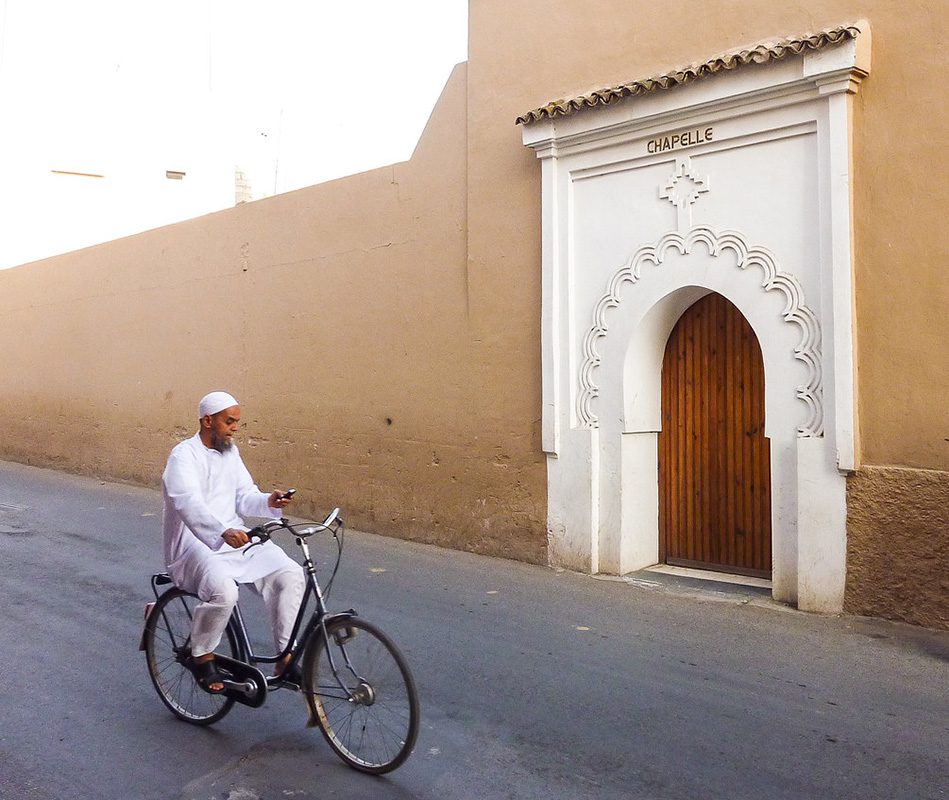
A princess’ veil made of gorgeous lace in the riad’s gardens
It was under a pretty white gazebo that Marc Helfer, the parish priest of Taroudant after serving as vicar general in Rabat, celebrated the wedding. Before the wedding, the bride wears it over her head, a different tradition from the tulle veil concealing the face, which is also reminiscent of the draping of oriental and Berber veils.
And while the view of the bride against a backdrop of pottery and terracotta is a little out of place, it has to be said that this immense lace train has immense class!
Moroccan magic for the party
Finally, after the religious ceremony, it was time for the ‘Moroccan party’, with all the essentials of a Moroccan wedding arranged in European style: traditional outfits, arrival in an amaria, guard of honour of tbourida riders, red caftan and gold jewellery for the bride, elegant jabador for the groom, throwing of flower petals, etc. (But many guests remained in Western costumes or wore outfits less warm than the beautiful ceremonial caftans).


Another royal wedding, almost thirty years ago, in Marrakech
These images reminded me of the wedding of Princess Sarah Poniatiowski, descendant of the last kings of Poland, and Marc Lavoine on 25 May 1995, exactly twenty-eight years earlier, but in Marrakesh.

As in the case of our Belgian couple, and for the same reasons, the civil wedding had taken place in France around ten days earlier. The religious wedding was celebrated in the Guéliz church, which was large enough to accommodate the wedding party, and the party was held at the luxurious estate of Xavier Guerrand-Hermès (yes, Hermès like the luxury bags and scarves).
Finally, the bride and groom escaped in a horse-drawn carriage through the streets of Marrakech for a wedding night at la Mamounia (the Mamounia before the renovation by Jacques Garcia).

The Moroccan wedding industry
These images may look very similar, but their small differences show just how much the wedding industry has changed over the last thirty years. Initially reserved for a few happy few and jet-setters, the Moroccan wedding party has been democratised, with a whole industry built around the needs of these very special tourists.
And in the other direction, Moroccan wedding parties are evolving, thanks to the influence of MREs and these foreign weddings. Moroccan wedding celebrations are highly codified, much more so than ours, with must-haves such as the photo session with the bride and groom (an hour and a half for my own wedding), the famous seven outfits, milk and dates, the procession through the town or village after the celebration, with cars honking their horns...
The central role of the neggafa and the person in charge of the hall
The neggafa is much more than a dresser. She organises the entire wedding ceremony, hires out the outfits and jewellery, makes sure that the bride looks her best throughout the wedding, supervises the famous photo sessions, gives the go-ahead for the two amaryia rides, etc. She is also rеѕроnѕіЬlе for everything that goes on at the wedding. She is also responsible for what happens the day before (the henna ceremony).
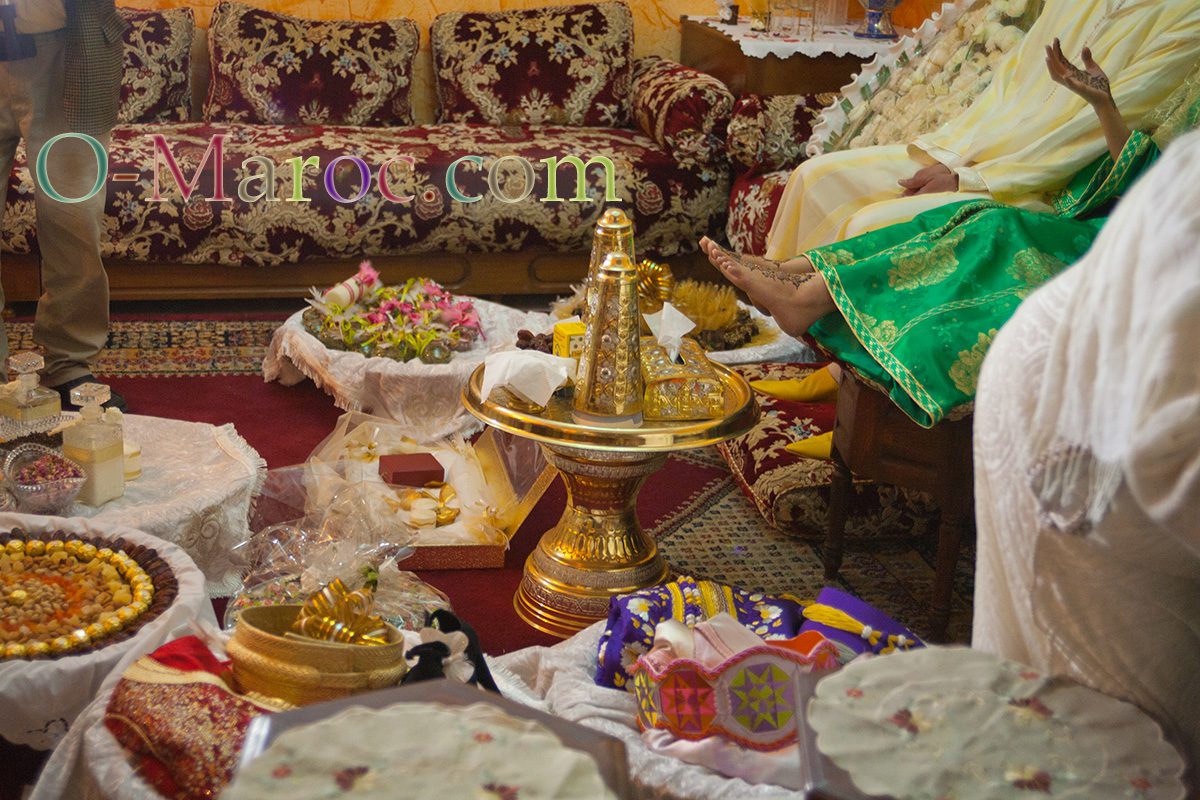
She works closely with one or more party halls, caterers and tents (in Morocco, when you can't hire a hall for a big wedding, you set up in the street with large tents called "caïdales"), and is the central contact. Taking a hall or a neggafa is the same thing, with one of the two service providers imposing the other, with whom they are used to working.
Weddings for 'foreigners' escape traditional family obligations. It is even possible to replace the Moroccan-style photo session (in which there is no kissing) with a Western-style session. For some time now, service providers have been offering fun innovations such as photobooth rental, hitherto unknown in Morocco.
Except in exceptional cases, the neggafa is not really competitive for this type of wedding, and will be a service provider for your central contact (usually a travel agency).
Organising your wedding party in Morocco: how to choose your service provider
It depends a little on what you want. If you just want a party followed by a honeymoon, there is a plethora of service providers. If you also want to organise the religious ceremony on site, you need to make sure that your contact is used to this and can take care of the formalities (baptism certificates, publication of banns, transmission of the civil marriage certificate)... or take care of them yourself.
Is a wedding in Morocco a princely luxury?
Yes and no. If you compare the prices of venues, caterers, etc. in Europe and Morocco, what you lose in transport costs, for example, can easily pay for itself. All that remains is to choose the right period, because summer is wedding season in Morocco too... and it's very hot there. And be aware that a long-distance wedding of this kind needs to be prepared well in advance!
The legal minute: Belgian marriage legislation
I've talked to you a lot about the formalities for a Franco-Moroccan wedding. The formalities are similar to those in France, except for a few details:
- publication of the banns 14 days before the wedding (10 days under French law)
- as in France, it is possible to get married abroad in accordance with the law of the country (so the marriage of two Christian Belgians is not possible in Morocco)
- there is no possibility of getting married at the Belgian consulate, whereas at the French consulate it is possible for two French nationals who are not French-Moroccan dual nationals, provided one of them has residency in Morocco.
- the marriage contract must be signed before the wedding (and, like the French consulates, the Belgian embassy and consulates do not provide notarial services)
- the civil ceremony precedes the religious ceremony.
More information
- Getting married abroad - Belgian law
- The official Belgian website covering the formalities for getting married abroad
- Queen Mathilde Blog on Twitter
- Prince Aurèle de Merode & Estelle Hanet got married in Morocco this weekend! Their civil wedding took place in Brussels a few weeks ago.
 A typo or syntax error? You can select the text and hit Ctrl+Enter to send us a message. Thank you! If this post interested you, maybe you can also leave a comment. We'd love to exchange with you !
A typo or syntax error? You can select the text and hit Ctrl+Enter to send us a message. Thank you! If this post interested you, maybe you can also leave a comment. We'd love to exchange with you !

